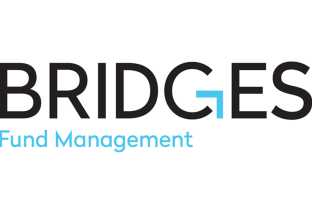The COVID-19 pandemic continues to rock the workplace with no end in sight, leaving business leaders to struggle with a wide variety of challenges, including keeping staff members happily engaged—and employed.
To make sense of the pandemic’s impact on workers—both on their day-to-day roles, as well as their mental well-being—a forthcoming article in American Psychologist examines current organizational psychology research to help business leaders manage COVID-related fallout in the workplace and develop solutions to ease the stress many employees are experiencing.
“We live in an incredibly interconnected global community. So disease threats such as COVID-19 need to be recognized as part of the current work-scape and systematically addressed,” says Harvard Business School Assistant Professor of Business Administration Ashley Whillans, who co-authored the article, “COVID-19 and the Workplace: Implications, Issues, and Insights for Future Research and Action,” with 28 other researchers.
The havoc the virus has wreaked on businesses worldwide should prompt business leaders to “find smarter and safer ways of working together,” the article says.
We talked to the researchers about how organizations can help employees cope with this difficult period—including everything from guaranteeing paid sick leave and gathering staff for virtual happy hours to allowing people to alter their job responsibilities and accommodating high-risk workers. They offered the following advice, based on recent research:
Encourage sick employees to stay home with paid time off

Another factor is various work-design features that pressure workers to attend when sick, including work overload, lack of backup, and understaffing. Some occupational cultures have the same effect, glorifying “toughing it out” as an indicator of work commitment. Finally, we can’t discount the fact that some people attend when ill because they love their jobs and are highly work-engaged.
All of this suggests a multi-pronged solution to contagious presenteeism: Remove financial incentives for it by providing paid sick leave, audit work designs for features that evoke undue pressure for attendance, and champion an organizational culture that fosters pro-health attitudes.
Show gratitude and facilitate social time to boost morale

Low-cost, light touch interventions can improve conditions for employees. Such interventions can include goal-setting exercises that help busy employees better manage their time and increase self-efficacy. For example, our team found that a simple time-blocking exercise that encouraged employees to find blocks of time to focus on “important” but not “urgent” work each week reduced stress and improved the productivity of busy professionals.
For workplace settings devoid of perks, small non-cash rewards like access to valuable online classes or fitness programs can also contribute to well-being. Other non-cash rewards, such as notes of appreciation from clients, can also positively impact workplace happiness.
Another factor that workplaces can focus on right now is creating opportunities for informal conversations. Small talk can play an important role in workplace happiness—and these casual interactions are the first to “go missing” in the virtual environment. Establishing opportunities for informal “water cooler” conversations could go a long way in promoting belonging.
Concrete tips I have heard from interviews include scheduling five to 10 minutes before a formal meeting for casual conversation, asking each other silly questions, establishing virtual team rooms, having biweekly happy hours, and if possible, having a physically distancing picnic. Social connection doesn’t always mean a Zoom call; sometimes even a text message can be enough.
Use ‘job crafting’ to let employees modify their roles

As many employees are now working remotely, there may be a tendency for leaders to engage in monitoring, leading to a reduction in felt autonomy among employees. Reduced autonomy on the job may lead to lower well-being. One of the challenges for leaders working in the virtual world is to learn to trust and delegate work to employees and not engage in over-monitoring as a means to manage the uncertainty associated with having a virtual workforce.
In addition to these means, employees can also engage in mindfulness practices that have been shown to be an effective antidote to workplace burnout.
Make accommodations for high-risk employees

Over and above the threat of the law, employers should be motivated by the positive reputational effects of making what is morally the right choice, and the potential negative effects of turning a blind eye. Practical steps employers can take to shield high-risk employees include:
- extending the ability to work full time from home;
- providing additional or enhanced personal protective equipment;
- creating a physical barrier between work stations (for example, Plexiglas screens or individual offices);
- and changing work schedules to minimize contact between coworkers.
Above all, employers should maintain an open dialogue with all employees to accurately assess which workers are vulnerable and what accommodations would best suit their specific needs.
Learn from female leaders who have managed COVID-19 effectively

Think of the hesitant response of UK Prime Minister Boris Johnson, who did not take this problem very seriously initially, and contrast it with the adequate reactions of Tsai Ing-Wen (president of Taiwan) and Jacinda Ardern (the prime minister of New Zealand), who took timely government actions to prevent the spread of the virus in their countries. The lesson from these examples are that not all crises are perceived alike in terms of effective leadership.
At times of conflict and war, people are more likely to endorse a more aggressive, masculine leader—for example, Winston Churchill—to take action. But a pandemic is not a war and framing it as a warlike threat may hinder effective action. An infectious disease threat is a different kind of crisis and requires swift action, but not necessarily an aggressive response. Yet it requires a response informed by a concern with public health combined with compassion for the victims.
As women tend to lead in a more participative manner than men, they may leave more room for the scientific experts, such as virologists, to inform decision-making. Additionally, women are more concerned about health and hygiene issues, as research on disgust-sensitivity shows, and this may also apply to leaders. Finally, and as indicated in the COVID-19 working paper, feminine values in leaders include a greater concern with moral decision-making, a higher sensitivity to risk, and a more empathic communication style, all of which have contributed to more effective leadership by women leaders.
Know when leadership requires ‘tightness’ and ‘looseness’
van Vugt: Looseness and tightness refer to cultural differences along which societies and organizations vary. Culturally tight organizations have stricter social norms and rules of conduct, and people tend to adhere to them more strictly. There is also a greater appreciation of order, a dislike of deviance, and a greater acceptance of punishment and dominant leadership.
Tightness seems to be an adequate coping response to an immediate crisis such as a pandemic, as it requires people’s strict compliance to a new set of rules, such as social distancing, to protect people against the virus. Hence, as a result of COVID-19, societies around the world have become culturally much tighter, especially those that were quite loose before the pandemic (for example, southern Europe).
Yet, research shows that the downside of cultural tightness is a lack of creativity and innovation, processes that thrive on deviance and non-conformity. So, a challenge for societies and organizations is how to maintain some level of looseness, while at the same time being tight to prevent spread of the disease, COVID-19.
Leaders can play a role in maintaining this balance, as they must try to achieve two goals simultaneously:
- protecting their citizens by being directive, and punitive towards rule-breakers;
- and assembling and relying on the right knowledge to deal with this pandemic threat.
This calls for ambidextrous leadership whereby leaders should signal to followers that they are in charge and know what they are talking about, thus have some knowledge about the pandemic. In practice this means that leadership during this pandemic crisis is distributed and shared between more dominance-oriented leaders, including the government and politicians, and prestige-based leaders, including the medical professionals and scientific experts. Most nations have indeed assembled crisis teams during the pandemic, consisting of both kinds of leaders.

New York Governor Andrew Cuomo, for example, has made frequent and effective use of metaphors in the ways that he communicates about COVID-19 and similar to how he might talk about "watching the dials"—and increasing or decreasing (as a metaphor for re-opening). The same is true for business leaders forced to deliberate on loosening or tightening, or re-loosening or re-tightening, rules that protect employees and, more generally, organizations.
Whether it's citizens responding to government leaders or employees responding to their company leaders, no one likes being jerked around, but it's clear that versatility and agility is needed for dealing with the pandemic.
About the Author
Dina Gerdeman is a senior writer for Harvard Business School Working Knowledge where this article was originally published.







